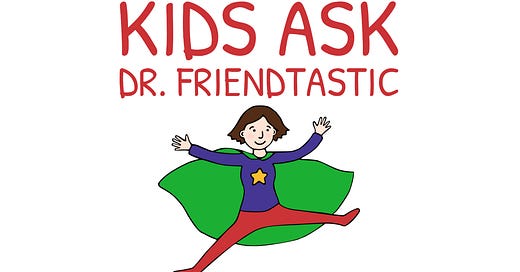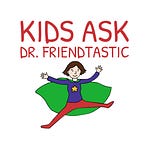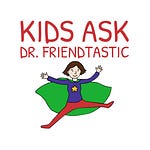Hi,
Everybody makes social mistakes. We go on too long telling a story or make a joke that no one finds funny. We fidget without realizing we’re bothering people. We accidentally say something that annoys or offends someone. The list of possibilities is endless.
And all of these common mistakes are no big deal…as long as we stop. Stopping allows for course correction.
On the other hand, kids (or adults) persist in doing bothersome things, others think their annoying behavior is intentionally rude or mean.
In this week’s podcast, Own asks about Stop Signals, which are all the ways–verbal and nonverbal–that people tell someone to stop. I talk about both sending and receiving Stop Signals and why they’re so important in friendships.
Let me know what you think!
Has your kid had struggles with recognizing, responding to, or giving clear Stop Signals?
Warm wishes,
Dr. Eileen
P.S. If you haven’t already, please watch and share my TEDx talk:
Is It Bullying or Ordinary Meanness? It was chosen as an “Editor’s Pick” by TED central! (They changed the title to Conflict Resolution on the Playground.)
Scroll down for an easy-to-read podcast TRANSCRIPT, DISCUSSION QUESTIONS, and how to submit YOUR CHILD’S QUESTION.
You might also like these podcast episodes:
Ep. 41 - Tessa, Age 9: Friends won't listen to stop or no
Ep. 18 – Kai, Age 9: Friends call him bossy
Ep. 43 - Beatrix, Age 8: Friend cut her hair!
Would YOUR kid enjoy being featured on the podcast?
Adults, please use your smartphone's memo function or an audio app to record your child's question. Hold the phone close to your child's mouth to make sure the recording is clear. Have your child state:
their FIRST NAME (or another first name),
their AGE, and
a BRIEF QUESTION or concern about friendship. (Please do not include any friends' names.)
Submit the audio file at https://DrFriendtastic.com/submit. I’ll answer as many questions as I can. (Obviously, this is not psychotherapy, and it’s not for emergency situations.)
Think About It Questions to discuss with your child
For a quick and easy FRIENDSHIP LESSON, play the podcast up to the end of the kid’s question, then ask your child/students what advice they’d give. Play my answer, then use the discussion questions below to deepen your child’s/students’ understanding.
Why are Stop Signals important for protecting friendships? (Hint: What could happen if you want a friend to stop doing something, but you don’t say anything? What could happen if your friend gives you a Stop Signal and you ignore it?)
Describe a time when a friend asked you to stop doing something. How did you feel about being asked to stop? How did you respond?
Describe a time when you wanted a friend to stop doing something. How did you handle it? How did your friend respond?
Why do you think kids sometimes ignore Stop Signals?
What are some things you could do if you ask someone to stop but they don’t listen?
Transcript
Hi there! I’m Dr. Eileen Kennedy-Moore, also known as Dr. Friendtastic. I’m an author and clinical psychologist based in Princeton, NJ.
Here’s today’s question:
Hi, my name’s Owen. I am 8-years old. How do I get better at using Stop Signals with my friends?
Hi, Owen. I’m so glad you sent in this question! You may have noticed that, in pretty much every episode, I encourage kids to imagine how the other person is feeling. This is called perspective-taking, and it’s very important for building and keeping strong and caring friendships.
But here’s the problem: We’re never going to be perfect about imagining someone else’s perspective because we’re not them. That’s why good communication is so important in friendships. Stop Signals are a great example of that.
Now there are two sides to Stop Signals: receiving them and sending them.
Receiving stop signals means paying attention and responding when our friends tell us to stop doing something. If we ignore a Stop Signal, that’s like telling a friend, “I don’t care how you feel or what you want! I’m just going to do what I want, even if you don’t like it!” Yikes! How do you think that message would make a friend feel? Not so good!
So, Step 1 for receiving Stop Signals is to recognize how important they are.
Step 2 is to notice Stop Signals when they happen. You may want to make a list of possible examples. This includes statements like “Stop it!” “Cut it out!” or “You’re being annoying!”
But sometimes, Stop Signals don’t involve words. You might see a friend roll their eyes, frown and cross their arms to show they’re annoyed, or make an exasperated sound like “Tsk. Sigh.” Nonverbal Stop Signals can be harder to notice than verbal ones, but they’re still very important.
Step 3 is, when you see or hear a Stop Signal, you need to stop. That shows caring for your friend and just plain politeness.
Now, some kids have a hard time stopping. If that’s you, you could try doing something to block the annoying action. Maybe try sitting on your hands, or crossing your legs, or closing your mouth and pretending your tongue is stuck to the roof of your mouth, like this. You could also say, “OK, I’ll stop now.” That tells your friend that you’ve heard the Stop Signal and you’re working on it. It also gives you a couple of extra seconds to reign things in.
Okay, so what about sending Stop Signals? The key here is to be clear and direct, but never mean.
Start with the word “I” to explain what you’re thinking or feeling, then ask for what you want them to do. So, you could say, “I don’t like it when you call me that. Please use my real name” or “I want to do some of the artwork on our project. How about if we split the coloring, so I do one side and you do the other?”
Notice that there’s no name-calling or accusing someone of being bad or mean or dumb. A Stop Signal isn’t about putting someone down; it’s about explaining what you want and why.
It’s also important to think about when to send a Stop Signal. You don’t want to be constantly correcting your friends. Being on the lookout for every little thing a friend does wrong isn’t kind. So if your friend just did a minor thing you didn’t like, you may want to just let it go and move on.
But if your friend has done something you don’t like more than once, and it’s bothering you a lot, definitely give a clear Stop Signal. Otherwise, you might get madder and madder until your resentment builds up enough to end the friendship. And then your friend would be completely confused about why you’re mad because you didn’t say anything!
Friends can’t read each other’s minds, so sending and receiving Stop Signals helps protect friendships.
This has been Kids Ask Dr. Friendtastic. If you have a question about making and keeping friends that you’d like me to answer, go to DrFriendtastic.com, and click on the podcast tab to see how to submit your question.
You can learn even more about friendship through my funny and practical books for kids: Growing Friendships: A Kids’ Guide to Making and Keeping Friends and Growing Feelings: A Kids’ Guide to Dealing with Emotions About Friends and Other Kids. They’re available through your library or wherever you buy books.
The Dr. Friendtastic for Parents newsletter and the Kids Ask Dr. Friendtastic podcast are for educational purposes only. They may or may not be relevant for your particular situation. I trust you to use your judgment about what’s right for your child and your family.













Share this post